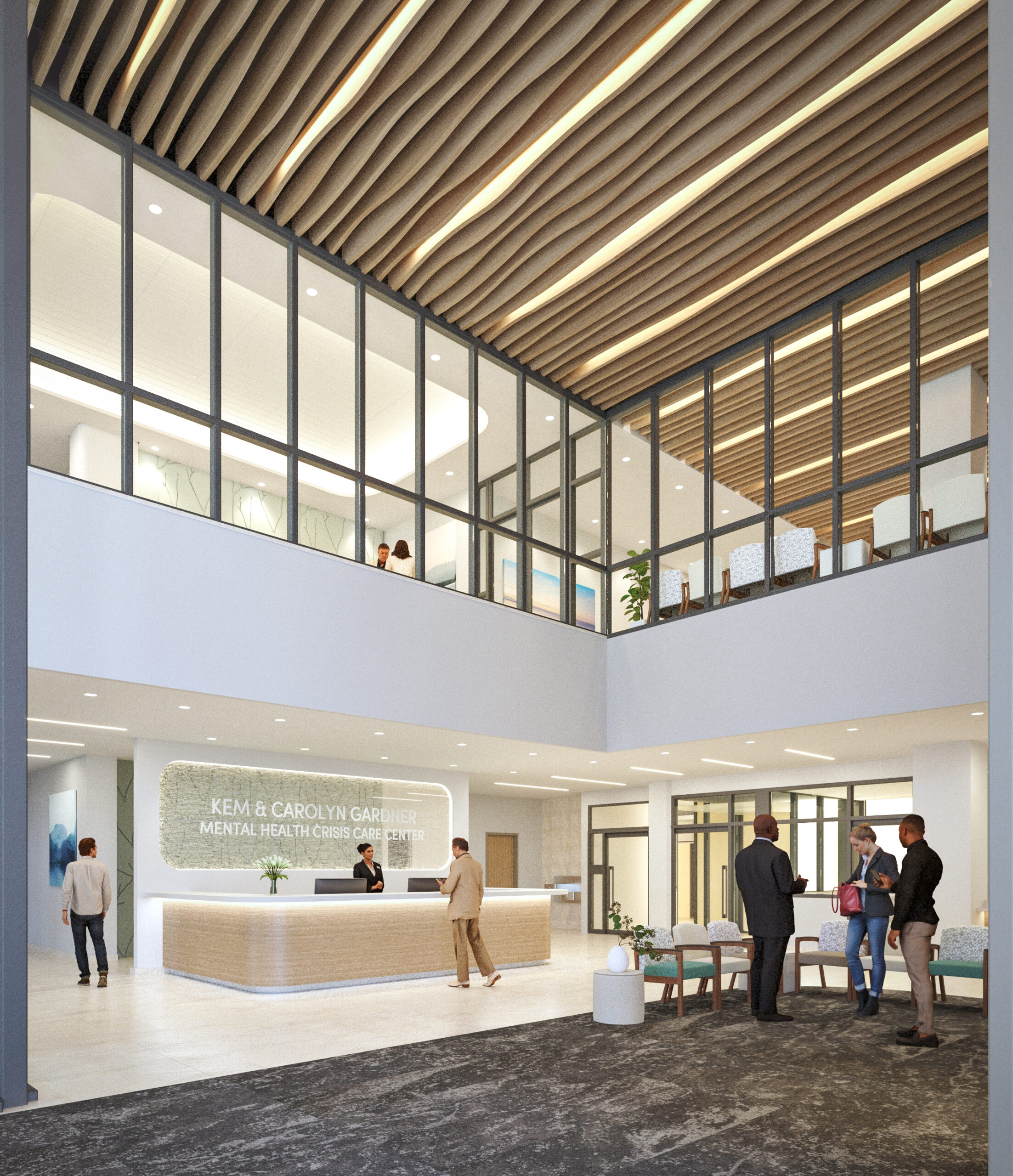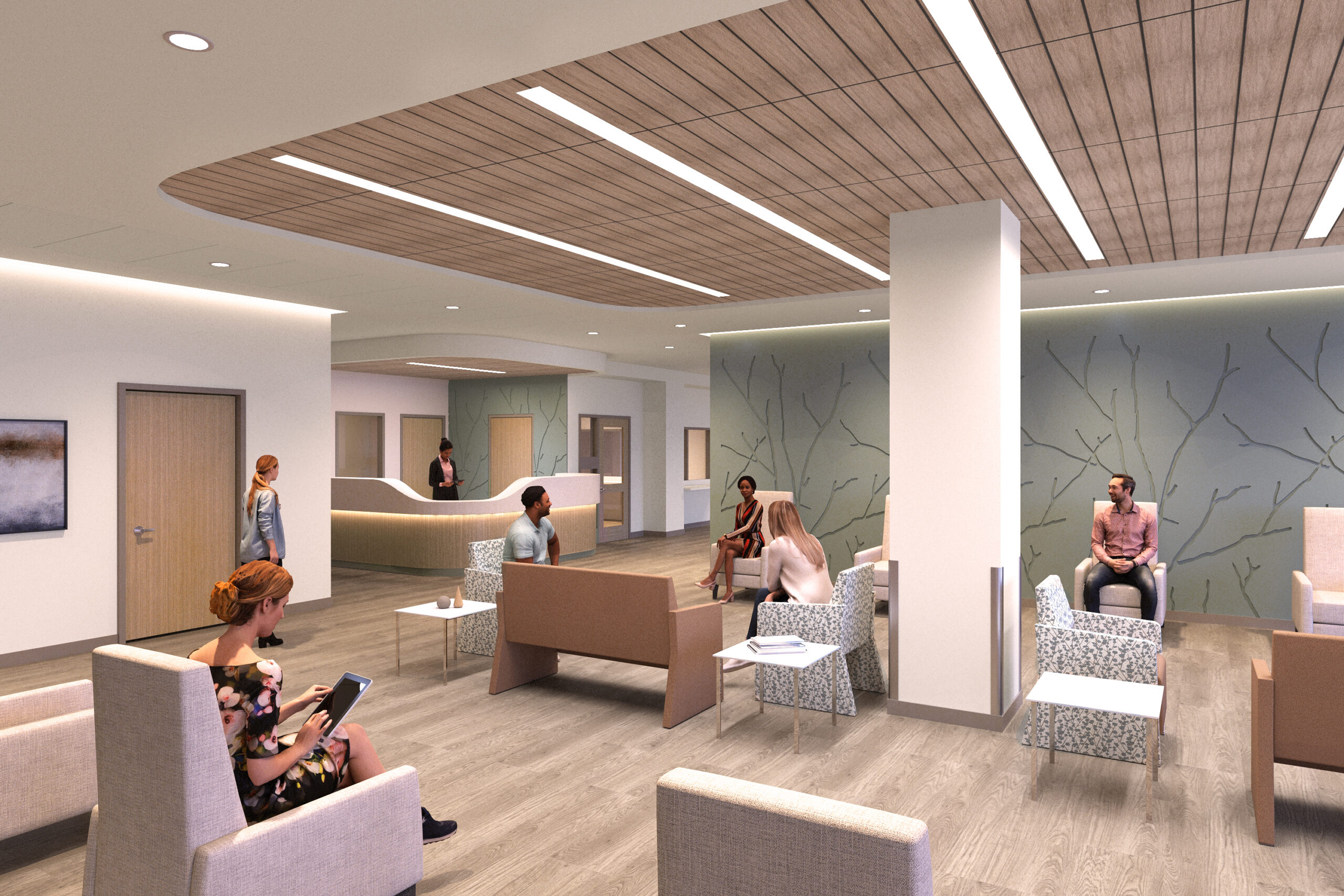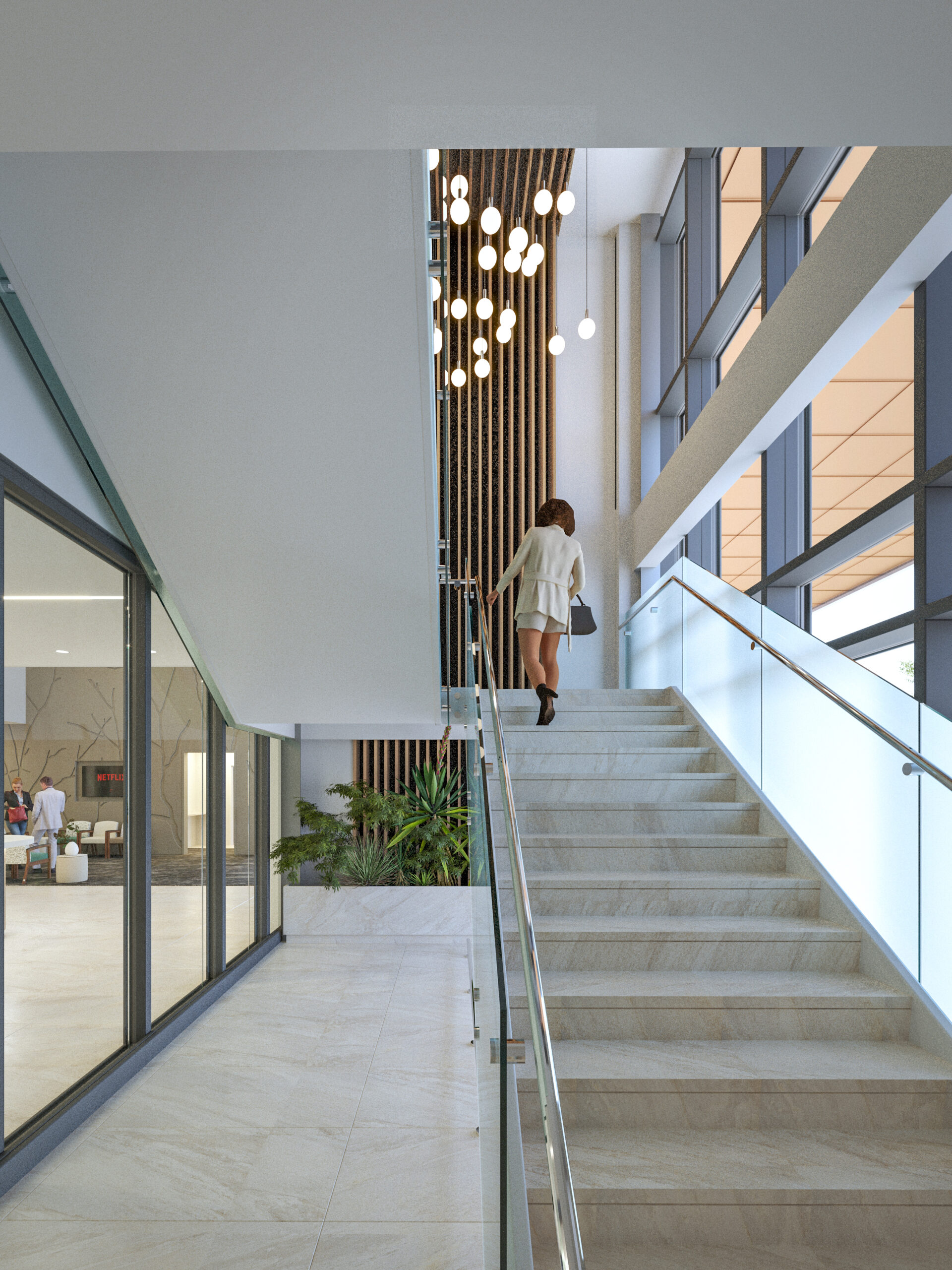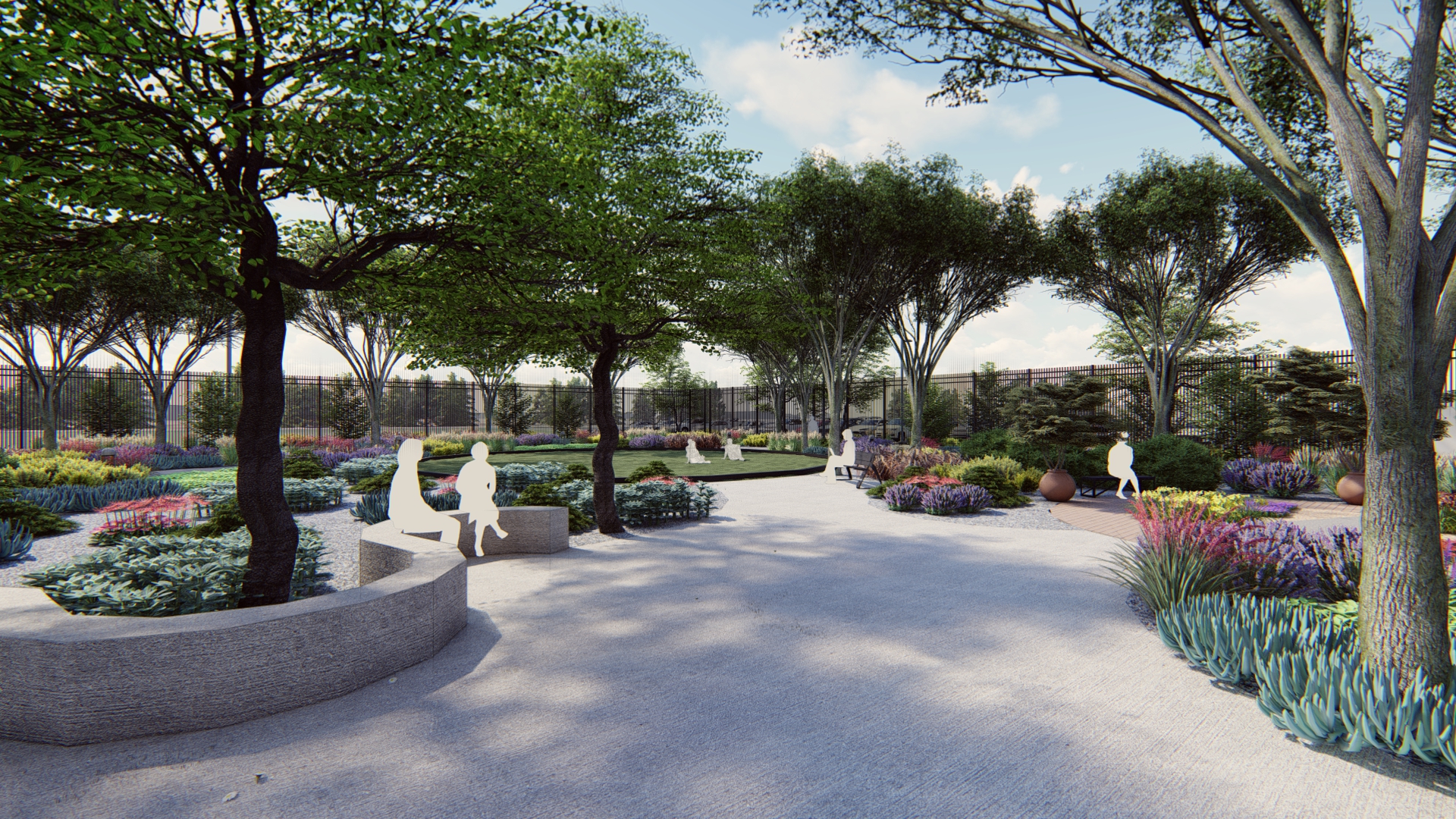New Design Approaches For Crisis Care
Historically, a severe underinvestment in mental health resources has left counties and cities with the responsibility of responding to people in crisis in facilities not intended for such purposes, such as justice centers and emergency departments.
This response has been often utilized to contain people in crisis, treating mental illness as a public safety issue rather than a healthcare concern. This leads to poor patient outcomes, incurring high costs to taxpayer resources, and leaves families still searching for effective ways to help their loved ones following these interventions.
Growing need for crisis care
Reshaping the approach to crisis care, healthcare providers are expanding existing clinical programs to offer more outpatient resources. Larger and more progressive systems are developing new clinical centers with specialized treatment programs to better respond to varying acuity levels of mental health patients.
These initiatives are alleviating emergency room overcrowding and reducing the use of medical/surgical spaces ill-equipped for inpatient mental health treatment by diverting patients presenting at the emergency department (ED) with mental health concerns to specialized receiving centers.
This is reshaping the narrative surrounding mental illness and mental health treatment facilities, replacing sterile, hard-security impressions with new design approaches that provide patients and their families with hope and dignity.
Creating human-centered crisis care spaces
A patient in mental crisis presenting for treatment may feel that their world is out of control. When they enter a facility, the space itself immediately becomes a tool in the treatment program. The right environment can calm and reassure, suggesting stability and a sense of clarity and control.
Designed with input from user and patient groups, different spaces within mental health facilities should align with the treatment modalities planned. This can include larger, more open group spaces that encourage movement and physical activity; comfortable rooms for groups to sit and have positive interactions; communal spaces encouraging socialization to reduce isolation; meditative and reflective spaces with opportunities for uplifting distraction; and smaller, more intimate rooms for patients to self-isolate when they need a safe space to regulate.
Equally important, the treatment space needs to be designed in a way that emphasizes patient dignity and maximizes individual autonomy, while also making patients feel physically and emotionally safe.
For example, are there elements in a patient room that allow for personalization or some control over the environment? Does the furniture contribute to the sense of safety and well-being? Do staff have visibility of patients without making them feel insecure? Do patients have choices of where to spend their time outside of their individual rooms?
By asking these questions, project teams can begin to outline design approaches that support patient dignity and positively affect treatment outcomes.
Improving community access to mental health treatment
Opening in 2025, the Kem and Carolyn Gardner Mental Health Crisis Care Center (HMHI Crisis Care Center) in Salt Lake City aims to change the narrative in mental health design by bringing critical crisis services and community resources together in one location.
The building’s design places a strong emphasis on hospitality and comfort, introducing a welcoming softness through repeated design patterns, layered lighting, and warm materials throughout the space. Designed by FFKR Architects (Salt Lake City) and Architecture+ (Troy, NY), the building will be an outward design expression of an investment in mental health.
That message will start at the main entrance with a broad, protective canopy. A tall, glass curtain wall will flood the lobby space with daylight and a concierge will greet and direct individuals from a hospitality-inspired reception desk. An undulating, warm wood ceiling with biophilic textural wall panels will further contribute to the sense of refuge and healing.
Space planning for mental health facilities
To support the various needs of the patients presenting at the 81,600-square-foot facility, the HMHI Crisis Care Center has a carefully planned sequencing of spaces.
While some patients could be presenting for care voluntarily through the main entrance, others may arrive via police or ambulance in a more dysregulated state. A separate, more discreet and higher-security entrance serves these higher acuity patients, yet still mirrors the finishes and incorporates the warm design touches of the main entrance to promote dignity in this area as well.
Inside the facility, the triage and assessment area will then be accessed through a secure vestibule. Wood ceilings and cabinetry, textural wall panels, and layers of lighting will help ease the transition to triage.
A centralized observation area at the center of three distinct receiving pods will allow staff greater flexibility to position patients based on care needs. With patients separated by diagnosis or acuity level, the separate pods can also help voluntary patients feel safer, less stressed, and less fearful.
Holistic services for mental health patients
Comprehensive support services at the HMHI Crisis Care Center will elevate the care for patients with a holistic focus. A mental health clinic on-site will offer immediate counseling while bridging patients to more dedicated, long-term therapy providers and options.
Physical health and basic needs support will be accommodated through a small medical clinic, dental clinic, and legal services. These specific services are tailored to address the common needs of the patient population experiencing acute crisis situations.
An acute stabilization area on the third floor will provide a safe, designated space where staff can manage patients and patients can find more privacy. The unit will be divided into separate neighborhoods with different color schemes and motifs, which allows both patients and caregivers a clear sense of orientation.
Access to open air and nature can be an essential component of patients’ care regimens, particularly in regions like Utah that are surrounded by landscapes and natural beauty. HMHI Crisis Care Center will include ample views of the surrounding landscape and access to outdoor healing gardens.
The gardens will provide a therapeutic and calming area for patients to relax, feel secure, and experience the positive effects of nature through carefully selected landscape materials, varied textural paths, and thoughtful groundcover choices.
Expanding mental health care
Looking beyond its patients’ current situations and to the broader mental health field, the HMHI Crisis Care Center will also be a site for training the next generations of crisis care professionals, including social workers, nurses, psychologists, psychiatrists, and more.
An integrated research component will gather and disseminate data to support caregivers in implementing new findings into clinical practice.
In addition, the facility will include areas for community outreach, training, and education to teach others about mental health and how to care for loved ones. Not only does the outreach program extend the sphere of care for individual patients, but it also shapes and helps reinforce the critical notion that mental health treatment is, indeed, healthcare.
While there are still steps to be taken to make mental health treatment more accessible and widely available, facilities like the HMHI Crisis Care Center are demonstrating a positive step forward.
Facility design should do what it can to help eliminate the perception of mental illness as something to be hidden or criminalized, reducing the stigma of seeking care and improving patient outcomes.
Michael Dolan, AIA, ACHA, EDAC, is a principal architect at FFKR Architects (Salt Lake City) and can be reached at mdolan@ffkr.com. Sydnie Young, SCCID, NCIDQ, EDAC, is a senior associate interior designer at FFKR Architects and can be reached at syoung@ffkr.com.





